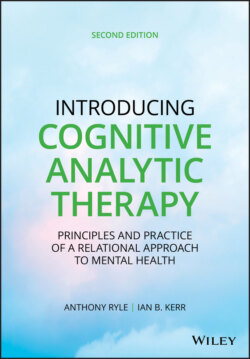Читать книгу Introducing Cognitive Analytic Therapy - Anthony Ryle - Страница 55
The Zone of Proximal Development (ZPD)
ОглавлениеThis is defined as the gap between what a child is able to do alone and what he or she could learn to do with the provision of appropriate help from a more competent other, who may be parent, teacher, or peer. The good teacher will aim to work in the ZPD, not assuming that current performance is a measure of capacity, by providing what Bruner (Wood, Bruner, & Ross, 1976) described as a “scaffolding” in the form of support and the provision and development of the appropriate conceptual tools which are then “handed over” to the pupil. Importantly, this also implies a “prospective” view of development (and of therapy). The aim is to explore where one can get to rather than interpret where one came from, as in some forms of psychoanalysis. This stance has some commonality with the “synthetic” and prospective therapeutic position stressed in analytical (Jungian) psychology (Samuels, 1985). It is clear that individual therapists should aim to work within the ZPD, but the same is true of the opportunities for learning through peers as provided in groups.
